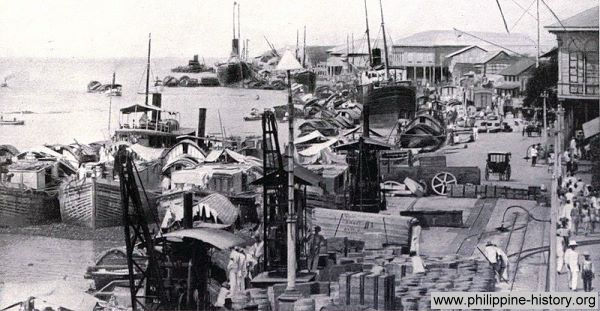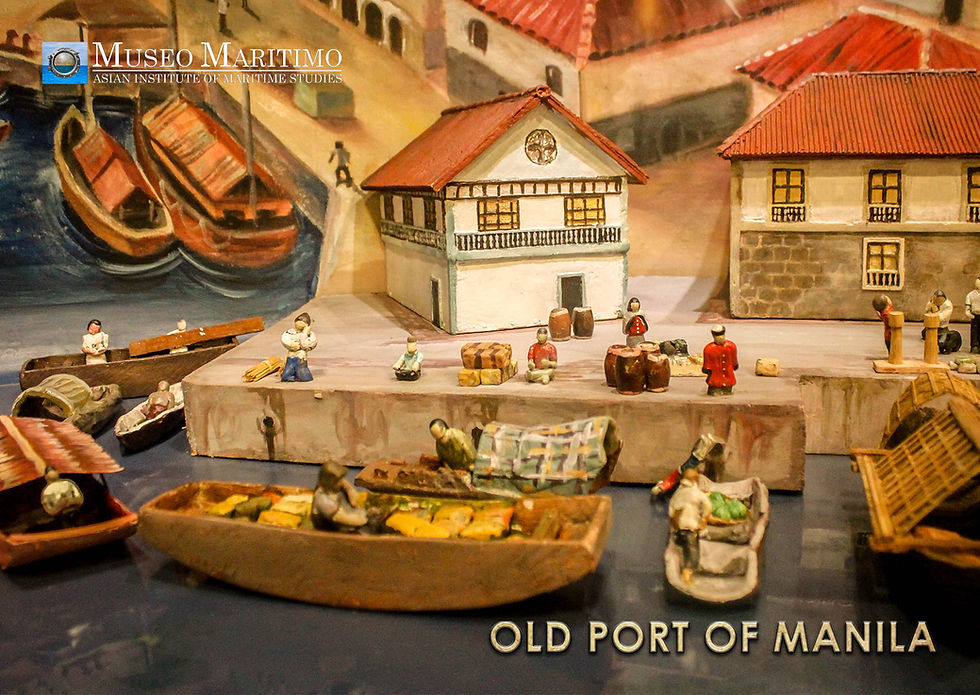From Galleons to Global Trade: The Legacy of the Port of Manila
- museomaritimo

- Sep 2
- 2 min read

September 2, 2025 - Pasay City, Metro Manila, Philippines
Article by AIMS Museo Maritimo Personnel
The Port of Manila is considered to be one of Southeast Asia’s oldest harbors. It also has a rich and complex history that spans centuries.
Strategically located near Manila Bay and the district of Tondo, the port has played a central role in the economic, political, and cultural development of the Philippines. The area was already a thriving trading hub since the 9th to 12th centuries and Early Filipinos have been trading with Chinese, Arab, and Southeast Asian merchants (Isa, 2014).
When Miguel López de Legazpi established Manila as the capital of the Spanish East Indies, the Port of Manila eventually became a crucial node in the famous Manila-Acapulco Trade. For over 250 years, galleons carrying silk, spices, porcelain, and silver sailed between Manila and Acapulco, establishing the port as a vital part of global maritime trade.
Under the Americans, the port’s usage for economic activities increased as it was utilized for international trade and the United States, at that time, was also the country’s leading trade partner (Bantigue, 2023). The early 20th century also saw the construction of piers, warehouses, and improved navigational facilities.
Today, the Port of Manila remains one of the country’s essential ports. The said port is divided into three areas. The North Harbor serves as the leading domestic port while the South Harbor is used for international shipping. The Manila International Container Terminal (MICT), on the other hand, is the country’s first modern terminal complex (National Statistics Office, 1987). Managed by the Philippine Ports Authority (PPA), the port handles tons of cargo annually.
Inside AIMS Museo Maritimo, visitors can see a diorama of the Old Port of Manila during the 1800s which exhibits the significance of the waterways when it comes to trade.

From pre-colonial trade to modern global logistics, the Port of Manila has stood at the crossroads of Philippine history and commerce, serving as a lifeline for the nation’s economy.
References
Bantigue, I. (2023). Assessment of the contribution of the Port of Manila to the economic development of the Philippines from 1910 to 2010. Journal of Maritime Research, 20 (1), 106-119. https://www.jmr.unican.es/jmr/article/view/700.
Isa, M. (2014). Port development in Southeast Asia. In A. Ghani, M. Subhan, & S. Yaakub (Eds.), Port, Maritime, and Hinterland Development in Southeast Asia (pp. 9-20). Malaysia: Penerbit Universiti Utara Malaysia.
National Statistics Office (1987). Philippine Yearbook 1987 [eBook edition]. Republic of the Philippines, National Economic and Development Authority, National Census and Statistics Office. https://www.google.com.ph/books/edition/Philippine_Yearbook/5CWyAAAAIAAJ.



Comments